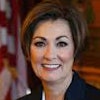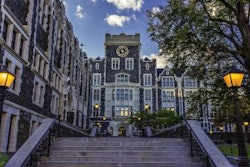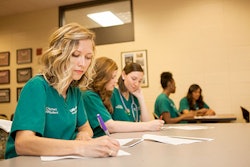WASHINGTON — The seventh annual U.S. News & World Report STEM Solutions Presents: Workforce of Tomorrow conference brought together leaders in education, business, government and the nonprofit sector to discuss strategies to develop the next generation of students in science, technology, engineering and math.
The theme — “Skills, Jobs and the New Collar Economy” — highlighted key innovations and practices to ensure that educational institutions and industry leaders work collaboratively to equip students with the skills needed in the workplace in the face of machine automation and other technological advancements.
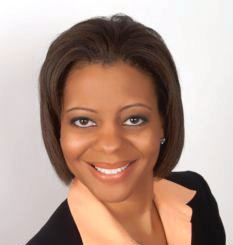 Dr. Kelly Mack, Association of American Colleges and Universities
Dr. Kelly Mack, Association of American Colleges and Universities
In opening remarks Thursday, Brian Kelly, editor and chief content officer of U.S. News and World Report, called for more cross-sector engagement between education institutions and STEM industries that includes fellowships and other experiential learning experiences for students and promotes life-long learning.
Community colleges have been “leading the way” in leveraging such partnerships with industries to craft curriculum for students to learn the skills needed for the ever-changing workforce, said Dr. Nicole Smith, research professor and chief economist at the Georgetown University Center on Education and the Workforce.
To prepare for the future where technology is expected to automate some jobs — but create jobs in new areas for workers — Smith said leaders should expose students to career opportunities at the middle school level. Further exposure to internships in high school and experiential learning and work opportunities in college, she said, will give students insight and training for the skills they need to be successful.
Smith cautioned against leaders “chasing a moving target” – training students for a particular job that may not exist in the future as opposed to teaching them the broader “usable skills” they will need to flourish in their industry.
A potential model for the future of career preparation and workforce development may include the offering of “nano-degrees,” said Dr. Susan Lund, director of research at the McKinsey Global Institute and partner at McKinsey and Company. These smaller certifications, she said, would open up multiple career pathways for learners.
An economist for nearly 20 years, Lund said she has seen a shift in the corporate world, where companies are now recognizing their role in leading with educators for student career preparation.
Educators and companies will have to be creative and innovative in the ways they offer mid-career education opportunities and life-long learning experiences, as they are essential to making the transition successful into the future workforce for both traditional students and adult learners returning for additional educational training, Lund said.
“Otherwise,” she added, “we’re not going to have the people we need to be successful.”
In another keynote presentation, Dr. Joseph E. Aoun, president of Northeastern University, spoke about higher education leaders’ obligation to “make people ‘robot-proof’” in the new technological era. He suggested that every institution provide a “Humanics” blueprint for students to learn three key literacies.
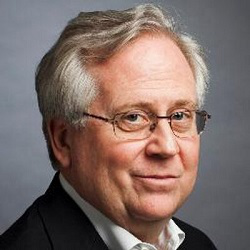 Brian Kelly
Brian Kelly
The first, tech literacy, ensures that students understand how to engage and interact with machines. The second, data literacy, ensures that students can navigate and understand the “sea of information” available, including recognizing false or misleading information.
The last of the three literacies — human literacy — is the most important, Aoun said, because it distinguishes humans from machines in workforce competencies revolving around areas such as entrepreneurship, creativity, empathy, ethics, teamwork and cultural agility.
Educators’ integration of the three literacies into student experiences can be combined with providing opportunities for students to participate in cooperative education with companies, Aoun said. He added that educators need to eliminate the dichotomy between STEM and the liberal arts.
“In higher education, we have created a dichotomy of learning to live and learning to make a living,” said Aoun. Navigating the world will require “an integration of the two,” he said, referencing “STEAM” for the newly added “Arts” component.
To diversify the pipeline of students entering into the STEM and STEAM workforce, corporate leaders highlighted their efforts to engage with underrepresented groups such as women, military personnel and other minority groups, as well as community-based organizations.
“The biggest asset that we have in this country is our people,” said Dr. France A. Córdova, director of the National Science Foundation and recent inductee into the 2018 U.S. News STEM Leadership Hall of Fame. “It’s really time to extend that welcome to every child in the U.S.”
Increasing women and minorities in STEM has been a priority for organizations and companies such as Intel and Microsoft. On the importance of role models, Dr. Kelly Mack, vice president for undergraduate STEM Education and executive director of Project Kaleidoscope at the Association of American Colleges and Universities, shared a moment with a young woman regarding STEM in a panel session.
“If I can do it, you can do more,” Mack encouraged. “Don’t stop.”
Recognizing that the various causes of disparities in STEM are complex, Intel and Microsoft worked to change their own internal culture. They implemented retention strategies and offered sponsorships, mentoring opportunities, workforce trainings and sustained collaborative partnerships with Minority Serving Institutions (MSIs).
Barbara Whye, chief diversity and inclusion officer and vice president of human resources at Intel, said the company offers an internal “WarmLine” retention service that, using predictive analytics, identifies challenge areas for leaders to examine. The company found that employees calling the line primarily had concerns about progression and connections with their managers.
Using the data to identify the problems and find solutions, Intel retained 96 percent of those who used the service.
Dr. Courtney Tanenbaum, principal researcher at the American Institutes for Research, said another way industries can authentically and meaningfully engage underrepresented groups and MSIs is to actively listen to the “voices of the unheard.”
Doing so will help with designing customized curriculum or workforce trainings that meet the needs of the students where they are, industry and education leaders said.
Chris Cortez, vice president of military affairs at Microsoft, said there needs to be a wider shift in the perception and narrative around who can enter the industry. From inside the industry, Cortez said, leaders should recognize the value of the skills that veterans, for example, have from their military service.
At the same time, Cortez said, educators must encourage veterans and military members to find and bridge the connections between their service and intended skills for a civilian workforce career.
“We have to work on both sides of the fence,” he said.
STEM Leadership Hall of Fame inductee Ira Flatow of the public radio show Science Friday and Dr. Henry Samueli were among those who said they are hopeful about the opportunities for young people in the future workforce, suggesting that technology will transform rather than eliminate jobs.
The biggest breakthrough comes from the notion that science is no longer just for the “nerdy” kids, added Samueli, a STEM Leadership Hall of Fame inductee and co-founder and chief technical officer at Broadcom Corp.
“It’s for everyone across the whole spectrum of learning.”
Tiffany Pennamon can be reached at [email protected]. You can follow her on Twitter @tiffanypennamon.




